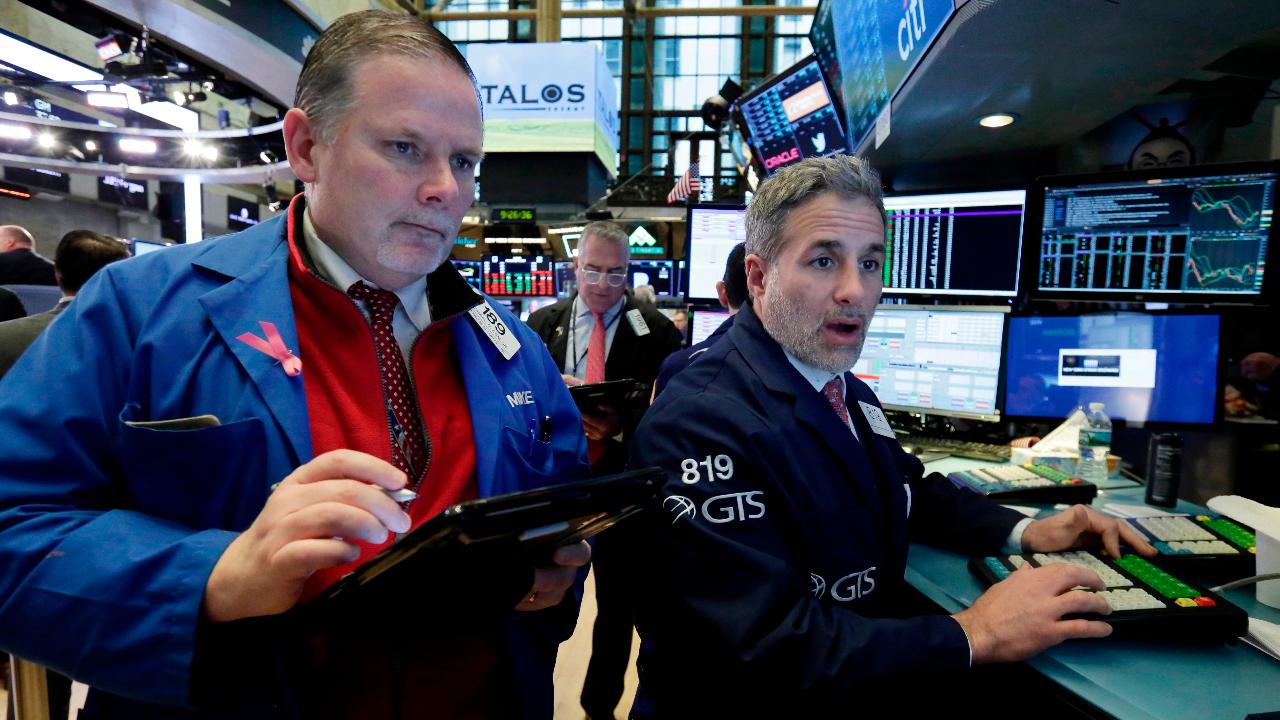Why is the market forecasting a Fed interest rate cut this year?
The Federal Reserve may have laid out its reasoning for leaving interest rates unchanged during its meeting earlier this month, but traders are increasingly betting on policymakers at the U.S. central bank cutting rates in the year ahead.
The CME’s FedWatch Tool, which analyzes the probability of rate moves for upcoming Fed meetings, is currently predicting a 59.7 percent chance of a rate cut in September, shifting the benchmark federal funds rate into at least the 2-2.25 range. Future trading also indicates more than a 60 percent chance of a second rate cut by January.
According to James McCann, a senior economist with Aberdeen Standard Investments, that’s largely because the forecast needs to take into account potential threats to economic growth, such as the U.S.-China trade war, Brexit uncertainties and muted inflation.
While the assumption among analysts may be that the Fed will stay on hold, the market needs to look at the distribution of all of the risks -- even if it’s possible that they never fully develop or hinder economic growth.
“What it comes out to is the risks point to the Fed having to cut,” he told FOX Business.
That doesn’t necessarily mean there will be a cut, however. Most analysts agree that if the risks don’t materialize, a rate cut will not be necessary.
On Wednesday, however, the Dow Jones Industrial Average fell to its lowest level since March amid inflamed U.S.-China trade tensions. Plus, the U.S. ten-year Treasury bond yield plunged to a 20-month-low which is often interpreted by investors as a sign global economic growth is slowing.
Charlie Ripley, a senior investment strategist for Allianz Investment Management, said the market is likely a little ahead of itself with rate cuts at this moment, given the patient signal from the Fed. Until they provide a definitive signal about which way they plan to move interest rates, the environment is unlikely to change, he said.
“Looking at lot of the Fed speak that comes out lately, it feels like the bar continues to be really high for them either to make a rate cut, or even to continue with rate hikes for that matter,” Ripley said.
If the rate cut the markets are expecting doesn’t materialize, it’s not necessarily bad news for investors.
“The explanation for that is the global growth, domestic inflation, the macroeconomic environment, I think, will be better than what the market is pricing,” McCann said. “While it won’t get that rate cut, at least that will be in part mitigated by some of these big risks that it’s concerned about don’t necessarily happen. You’re sort of giving with one hand and taking with another.”
CLICK HERE TO GET THE FOX BUSINESS APP
The Fed has also continued to signal a dovish policy stance for the year-ahead. Minutes from the April 30-May 1 meeting revealed that policymakers expect rates to stay steady, even in the face of increased global economic growth or more moderate growth, better financial conditions, and steadying global uncertainties.
"Members observed that a patient approach to determining future adjustments to the target range for the federal funds rate would likely remain appropriate for some time, especially in an environment of moderate economic growth and muted inflation pressures, even if global economic and financial conditions continued to improve," the minutes summary said.




















